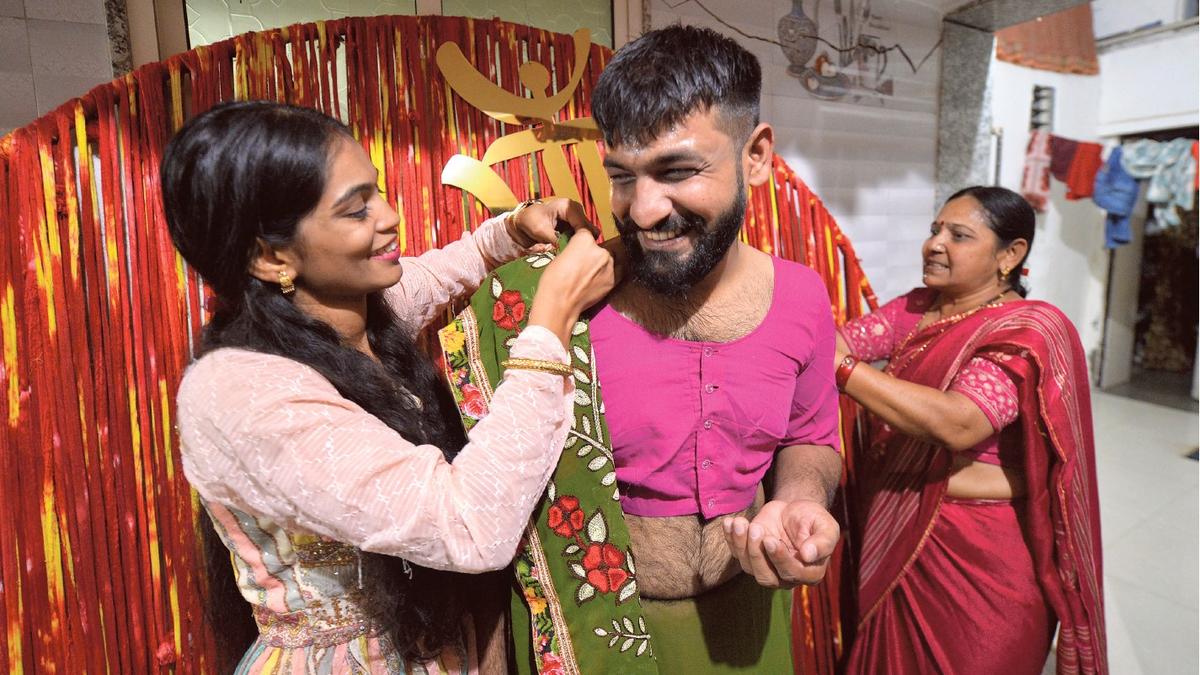In the narrow, labyrinthine lanes of Ahmedabad’s old city, the walls whisper age-old stories, keeping alive traditions both unusual and beautiful. One such story is that of Saduma, a woman from the Barot community, whose memory lingers in a ritual still observed.
The legend dates back to 1816, when Ahmedabad was under Maratha rule. According to one retelling of the story, the ruler of the city, captivated by Saduma’s charm, demanded that she be brought to his palace. But Saduma resisted. She asked her husband to end her life with a sword rather than surrender to the ruler’s whims. He could only inflict a minor injury, and in her anguish, Saduma cursed her own community.
As the years passed, the Barot community sought to atone. They promised that on every Navratri Ashtami, men from the community would don saris and perform garba in Saduma’s memory. This symbolic inversion — men wearing women’s attire — was an act of penance, remembrance, and devotion.
Over two centuries later, the tradition continues, a living testament to myth and cultural memory. Every year, the ritual is performed with a quiet intensity that contrasts sharply with the grand commercialised garba celebrations elsewhere.
Men in saris dance through the lanes, keeping alive the story of Saduma with every step.
On September 29, the eighth night of Navratri, an event was held to recreate Saduma’s story as chronicled by writer Jhaverchand Meghani. The event drew over 180 visitors, who gathered in a community hall for the performance and a subsequent discussion.
In these quiet rituals, Ahmedabad’s old city reminds us that history is not only remembered in books but that it is lived, performed, and celebrated. The ritual is performed only once a year.
While it is rooted in the Barot community, this year saw many young men from outside the community donning saris and joining the dance.
“I have been wearing a sari and performing garba every Navratri Ashtami for the past 15 years, to please Saduma and seek her blessings for peace and prosperity in our Barot community. Believe it or not, many men from outside the community also join the celebration… The rule is very simple: one must wear a sari and perform garba on Navratri Ashtami,” said Nileshbhai Barot (55), a resident of Saduma ni Pol, Ahmedabad.
Getting ready: A Barot man dresses up in a sari for the garba at Saduma ni Pol in Ahmedabad. The performance is a traditional practice that local people believe will ward o a curse on the Barot community
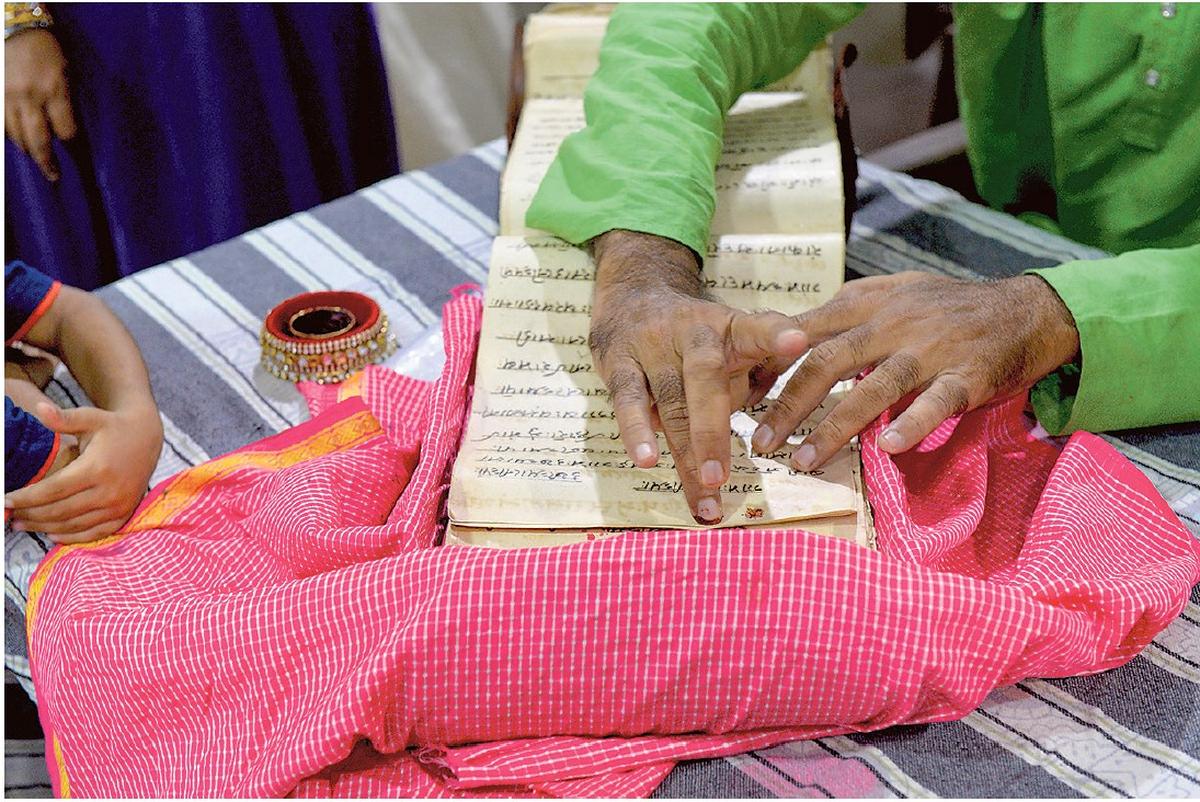
Paying obeisance: A Barot man performs rituals before the Vanshavali, a record of the
community’s history, in Ahmedabad.
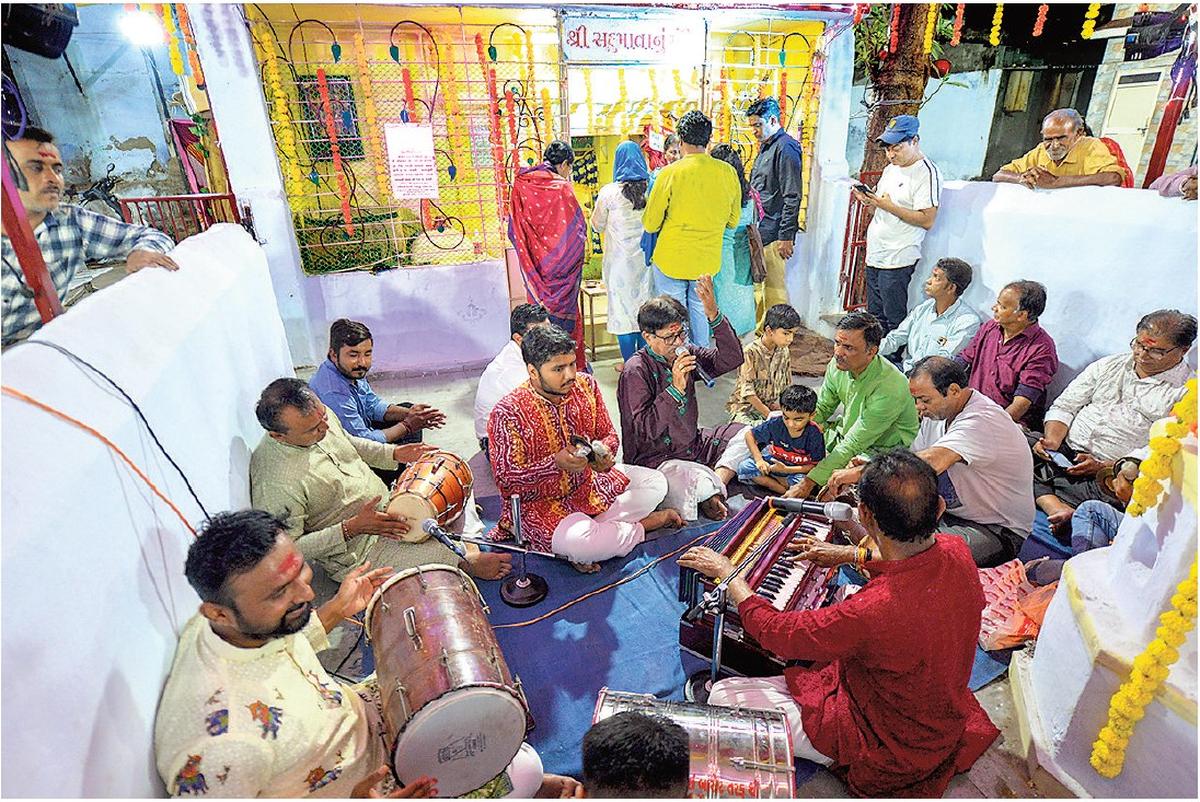
Night of hymns: A group of men render songs ahead of the garba performance at the Saduma Temple
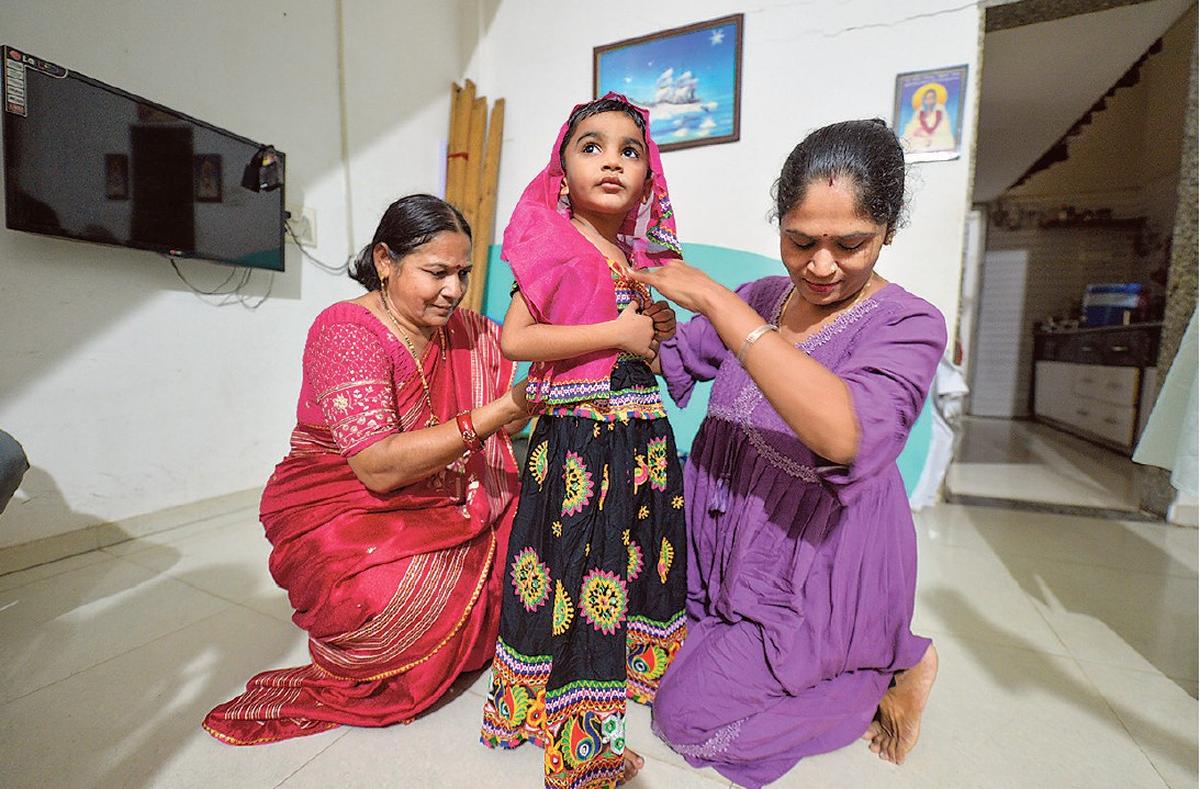
Tiny steps: There’s no age bar on who can participate. A young boy from the community gets decked up at his home for the dance.
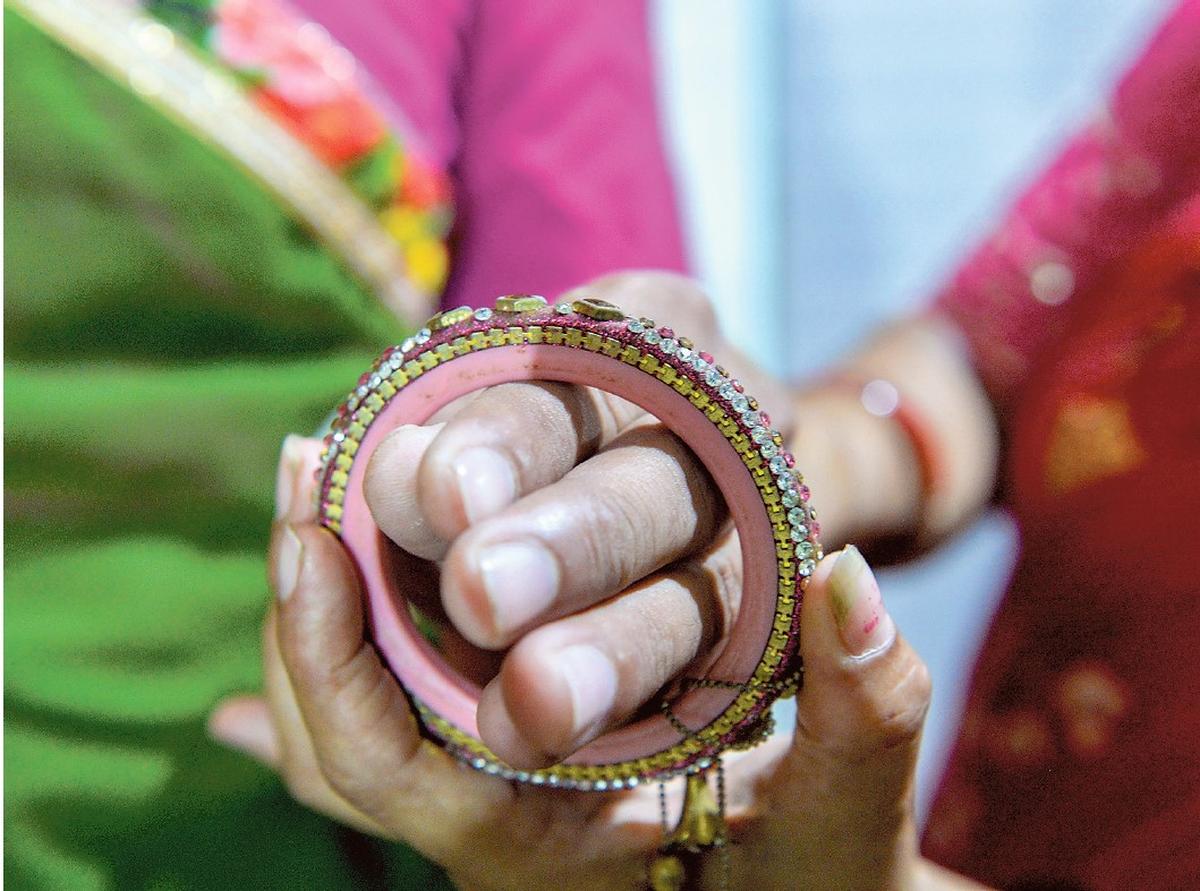
Keeping the faith: Bangles adorn the hands of a Barot man as he gets ready for the ritual on Navratri Ashtami to seek blessings for peace and prosperity in the community.
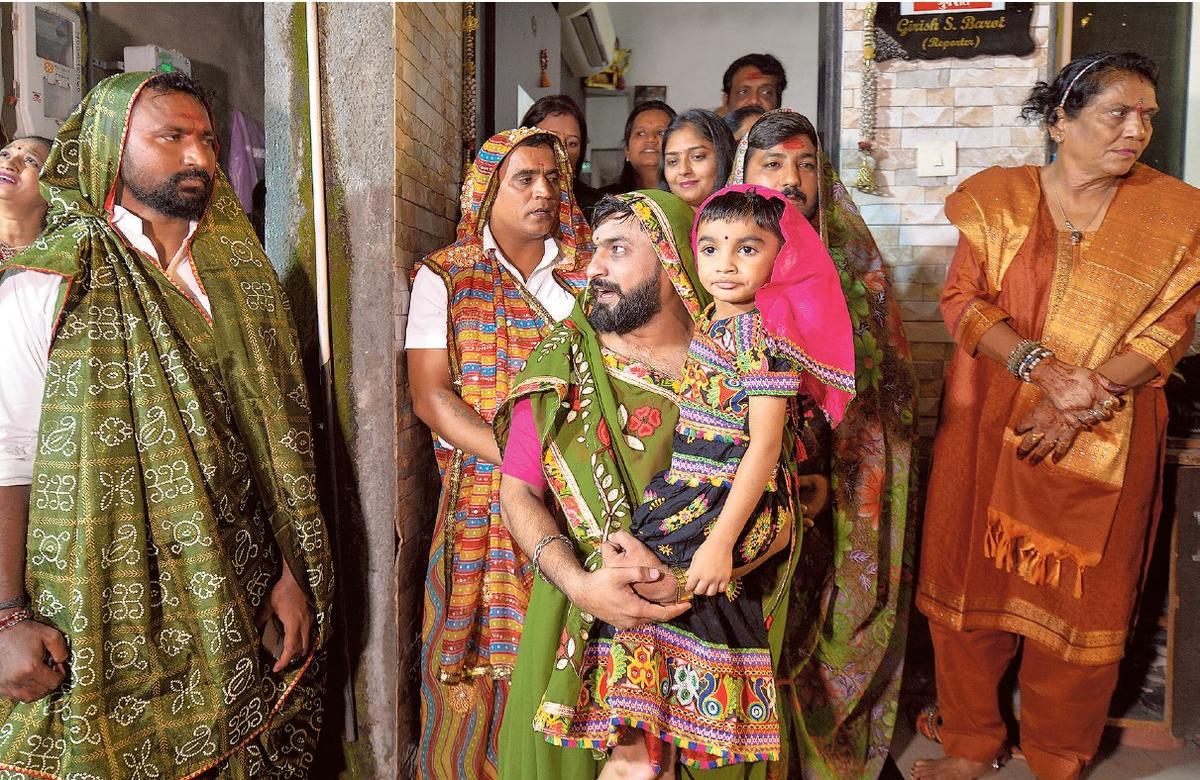
Sari and stories: Men of the Barot community step out of their houses wearing women’s attire as part of a centuries-old tradition for the garba on Navratri Ashtami
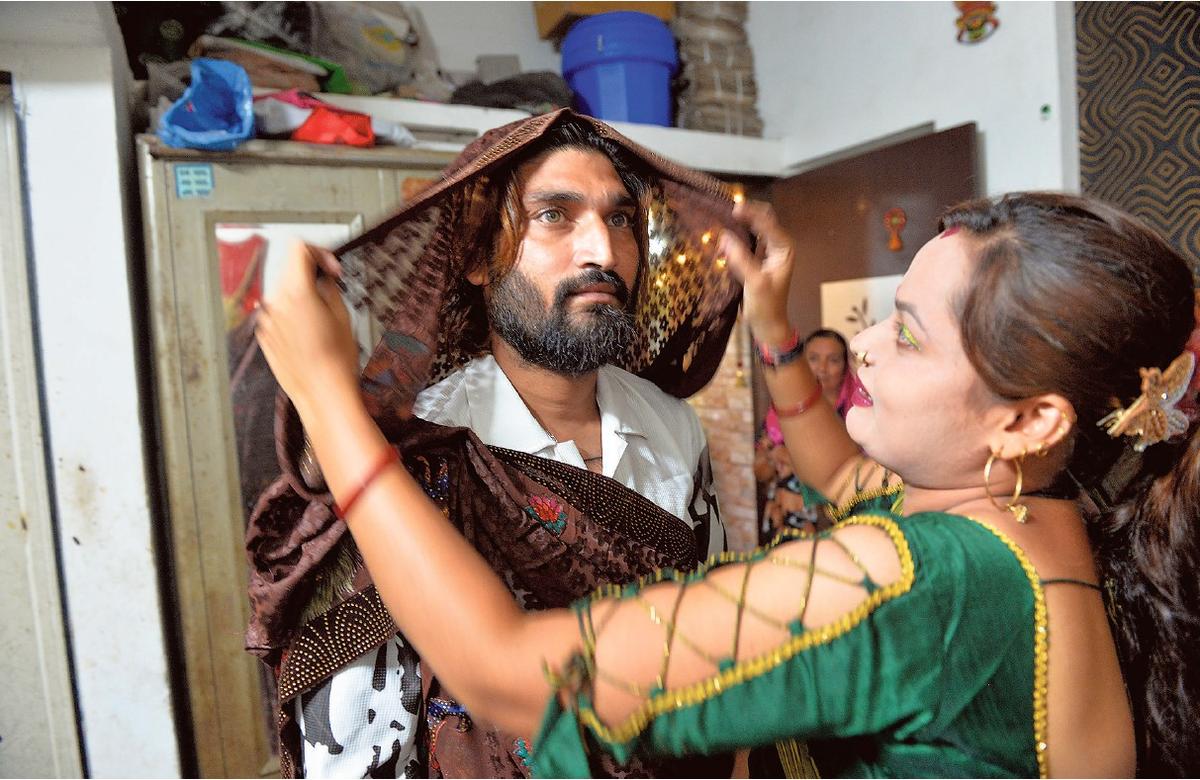
Pitching in: Women help Barot men get ready for the event that keeps alive the story of Saduma. This year, some men from outside the community also took part in the garba at Ahmedabad
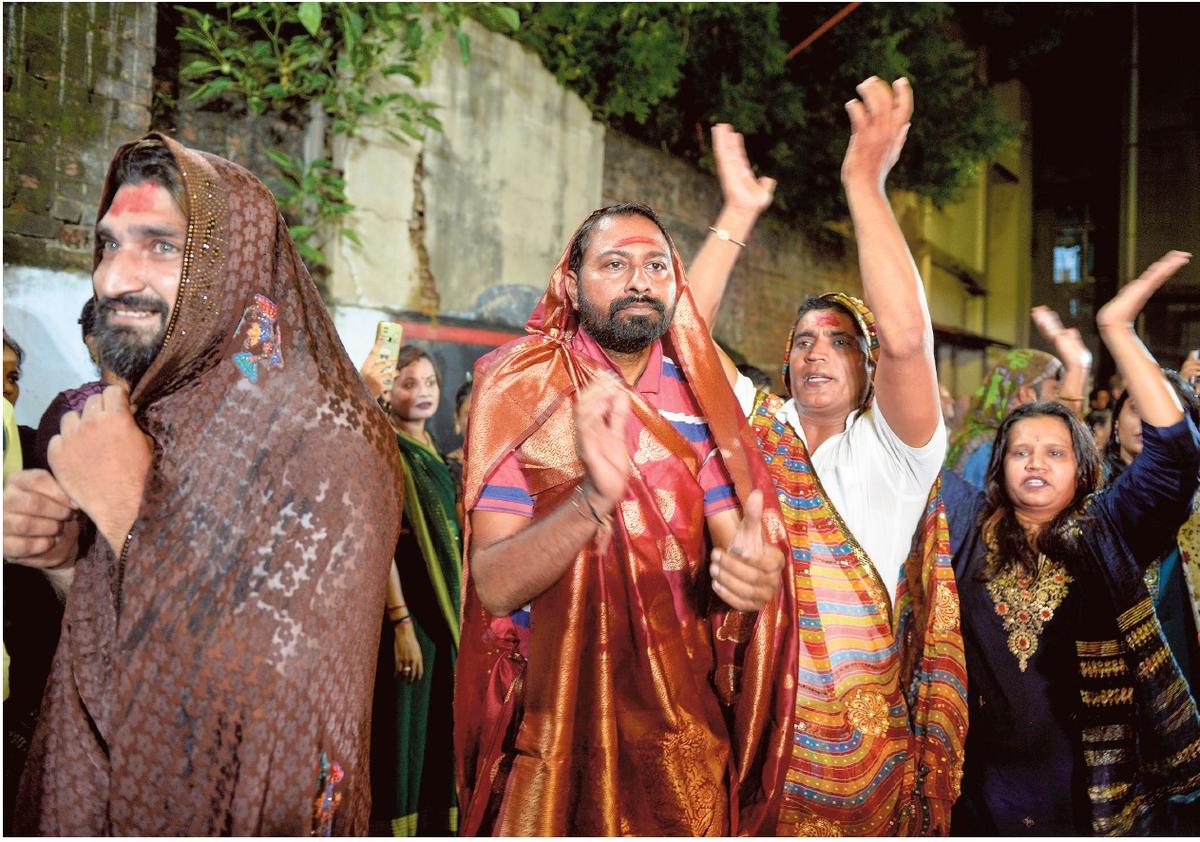
Turning curse to custom: Dressed in finery, Barot men sing, clap and twirl during the garba in Saduma’s memory.
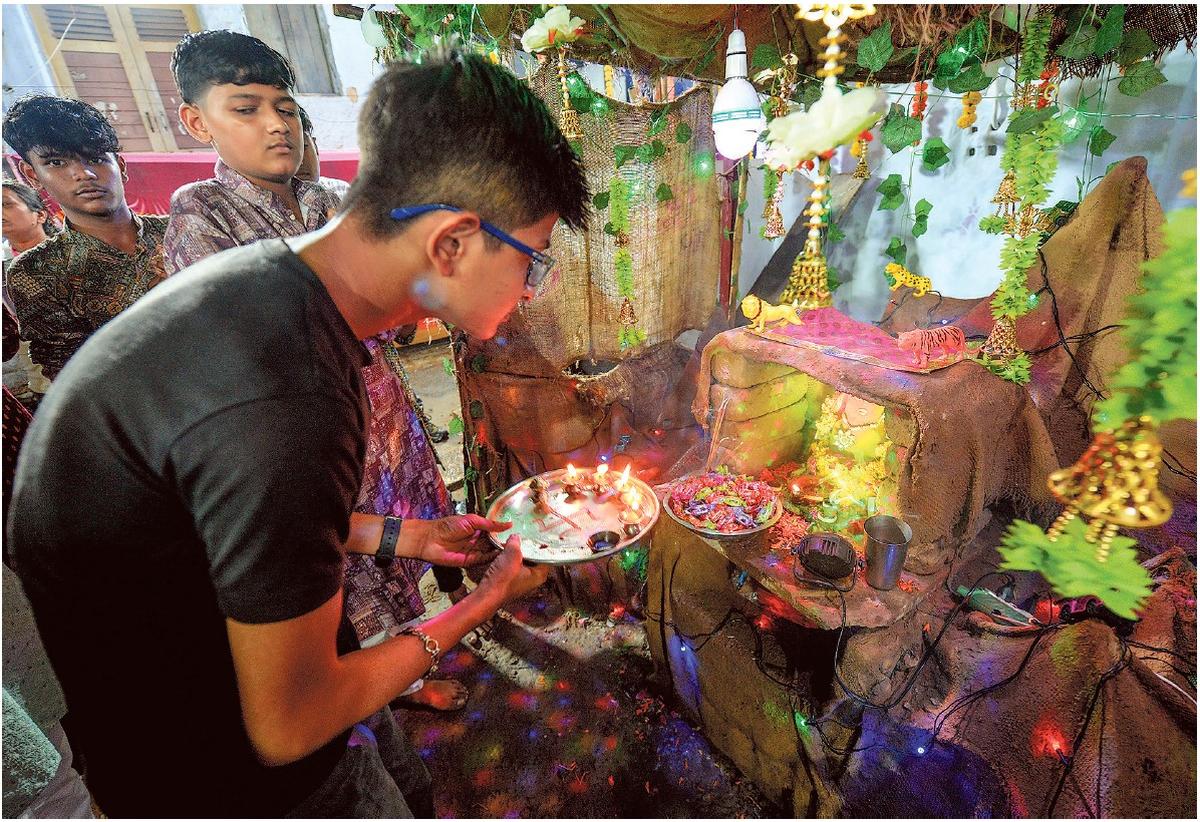
Annual atonement: A young boy from the community performs rituals at Saduma Temple.
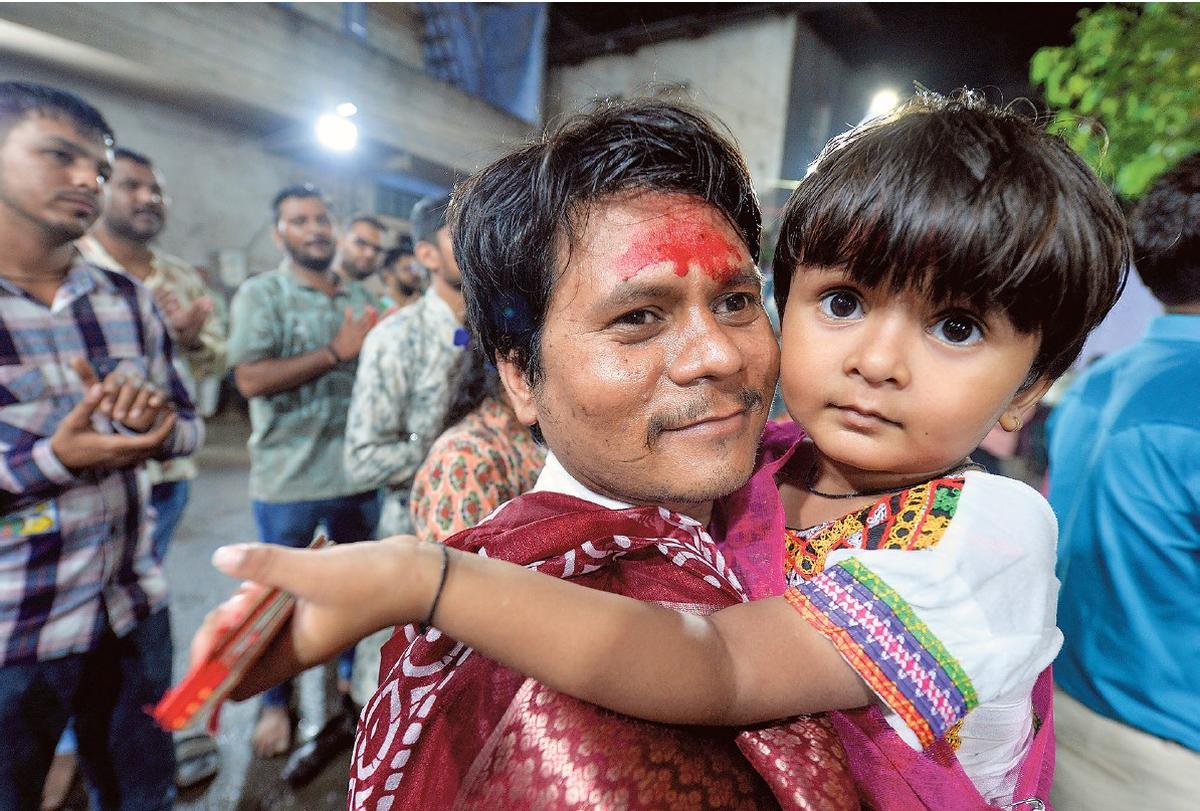
Passed down: A man and child look forward to joining the dance
Published – October 05, 2025 08:54 am IST

